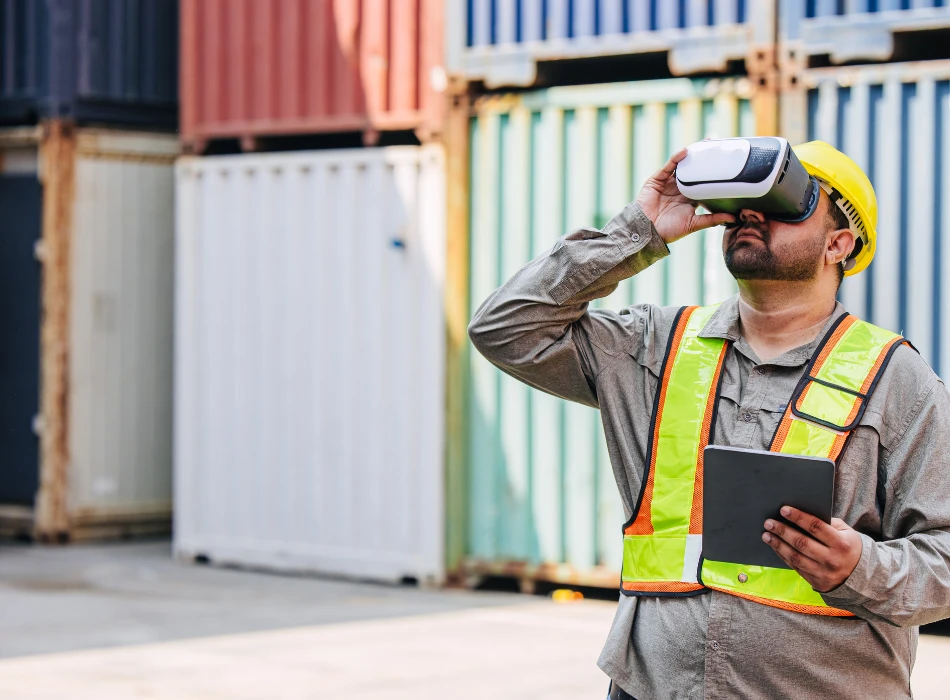Tech Innovations Transforming Cold Chain Logistics
Discover how tech innovations are transforming cold chain logistics through real-time monitoring, predictive maintenance, route optimization, automated decision-making, inventory management, blockchain transparency, and last-mile delivery solutions.

The cold chain logistics industry is rapidly evolving, driven by technological innovations that enhance efficiency, improve product integrity, and reduce costs. As businesses strive to meet the growing demand for temperature-sensitive products, these advancements are crucial for maintaining a competitive edge. Here’s a look at some of the key tech innovations transforming cold chain logistics.
Real-Time Monitoring Systems
Key Insight: Continuous monitoring of temperature and environmental conditions is essential for ensuring product quality.
- Case Study: CrossML has developed AI-powered real-time monitoring systems that integrate with IoT devices. These systems track temperature fluctuations and humidity levels throughout the supply chain, providing stakeholders with immediate alerts if any deviations occur. This capability significantly reduces the risk of spoilage and ensures compliance with safety regulations.
Predictive Maintenance
Key Insight: AI can predict equipment failures before they occur, minimizing downtime and product loss.
- Case Study: With AI-driven analytics, companies can analyze historical data from refrigeration units to identify patterns indicative of potential failures. For instance, AI systems can monitor the performance of compressors in refrigerated trucks and recommend maintenance before breakdowns happen, preventing costly losses due to equipment failure.
Enhanced Route Optimization
Key Insight: AI algorithms optimize delivery routes to improve efficiency and reduce thermal abuse.
- Case Study: Coca-Cola employs AI for route optimization, analyzing traffic patterns and weather conditions to determine the most efficient paths for its refrigerated trucks. This not only shortens delivery times but also helps maintain optimal temperatures during transit, ensuring product integrity.
Automated Decision-Making
Key Insight: AI facilitates real-time decision-making based on collected data.
- Case Study: AI systems can automatically adjust temperature settings in refrigerated units or reroute shipments to avoid delays based on current conditions. This automation reduces human error and speeds up the decision-making process, enhancing overall operational efficiency.
- Improved Inventory Management
Key Insight: AI enhances inventory management by providing accurate demand forecasting.
- Case Study: Walmart utilizes AI to analyze sales data and predict demand for perishable goods. By adjusting inventory levels accordingly, Walmart has successfully minimized stockouts and overages, leading to a significant reduction in food waste across its stores.
Advanced Load Optimization
Key Insight: Optimizing load configurations maximizes space utilization while maintaining appropriate environmental conditions.
- Case Study: Companies like Kraft Heinz use AI to analyze the size, weight, and temperature requirements of each product to recommend optimal loading configurations for their refrigerated trucks. This approach not only maximizes cargo capacity but also reduces energy consumption during transportation.
Blockchain for Transparency
Key Insight: Blockchain technology enhances traceability and transparency in the cold chain.
- Case Study: The integration of blockchain in cold chain logistics allows stakeholders to access immutable records of product conditions throughout their journey. This technology provides a secure way to verify compliance with temperature requirements and enhances trust among partners in the supply chain.
Last-Mile Delivery Innovations
Key Insight: Technological advancements are transforming last-mile delivery within cold chain logistics.
- Case Study: Companies are increasingly adopting smart delivery solutions such as temperature-controlled lockers and drones for last-mile deliveries. These innovations ensure that temperature-sensitive products arrive at their destination safely while minimizing handling during transit.
Conclusion
Tech innovations are revolutionizing cold chain logistics by enhancing real-time monitoring, predictive maintenance, route optimization, automated decision-making, inventory management, load optimization, transparency through blockchain, and last-mile delivery solutions. As companies continue to adopt these technologies in 2024 and beyond, they will be better equipped to navigate the complexities of modern supply chains while meeting consumer demands for high-quality temperature-sensitive products. By leveraging these advancements, businesses can ensure operational efficiency, reduce waste, and maintain product integrity—ultimately leading to improved customer satisfaction and a competitive advantage in the market.
Resources
- CrossML – Using AI in Cold Chain Logistics
- NextGen Invent – How Artificial Intelligence is Transforming Cold Chain Logistics
- Food Logistics – How Artificial Intelligence is Transforming Cold Chain Logistics
- Tive – 2024 Logistics Technology Trends: Cold Chain Management
- Zhenhub – Advancements in Cold Chain Logistics